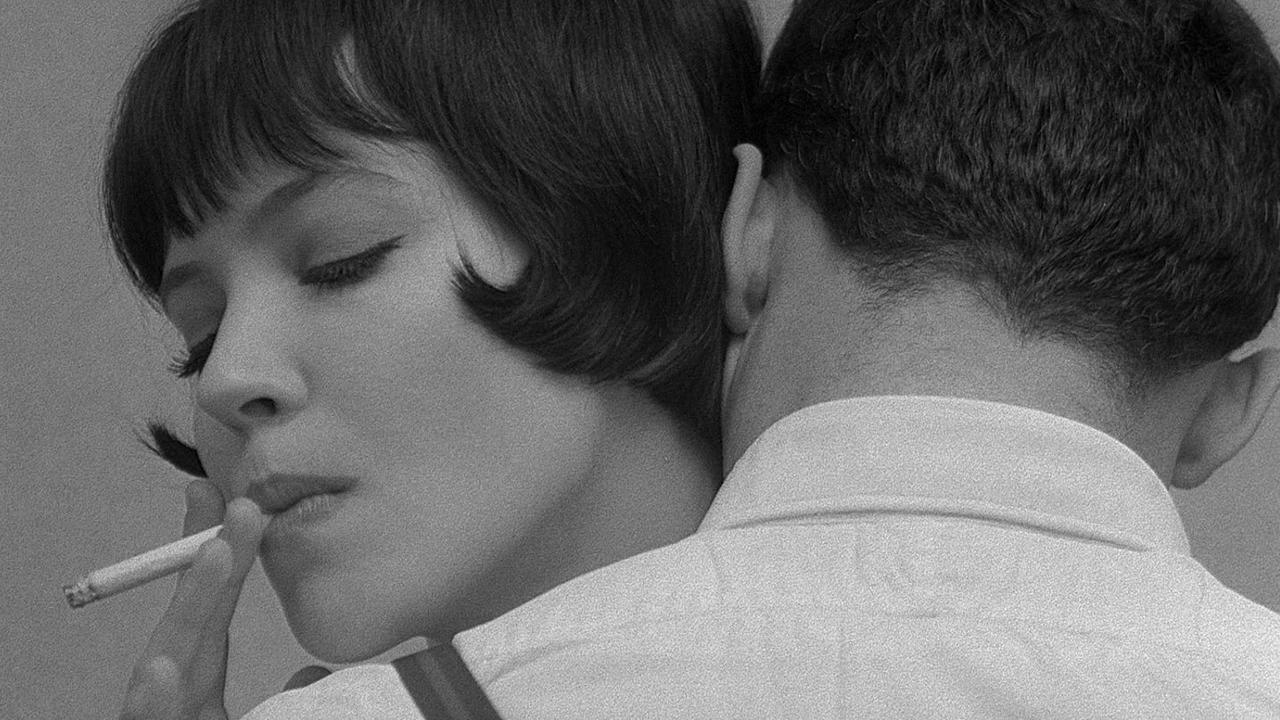In Emile Zola’s Nana the heroine, a high-class courtesan of the Parisian demimonde, is likened to “those monsters of ancient times whose fearful domains were covered with skeletons;” her beauty is poisonous, like “a rising sun shining down on a field of carnage;” always the victor, she remains “as unconscious of her actions as a splendid animal,” reigning over a host of ruined men, who fall from her hands “like ripe fruits… lie rotting on the ground.”
Like her possible namesake, the heroine of Jean-Luc Godard’s Vivre sa vie (1962) is a victim of the society’s increasing commodification of feminine attributes. Wearing her hair in a sleek, Flapper bob, this Nana also recalls Louise Brooks’s character in Pandora’s Box (1929), whose lethal sexuality eventually blindfolds her to danger, and dies at the hand of Jack the Ripper. Nana, though a striking beauty, lacks the skill of coquetry and the air of conspiratorial knowingness peculiar to an archetypal femme fatale, and is thus portrayed in a more sympathetic light, as an aspiring actress sidetracked to the seedy world of prostitution. Her expressive eyes, apt nonetheless to stare abstractedly and inscrutably at a distance, are cracks of her composed veneer: into these cracks we see a tender soul susceptible to the pain of her kind (she is moved to tears when seeing Carl Theodor Dreyer’s The Passion of Joan of Arc), and we see how she laughs at a man’s joke and breaks into an impromptu dance to the jukebox music – there is a child in her that is impervious to the travails of the adult world.
The film is composed of twelve chapters, most of which are brief and fragmentary, and end in an inconclusive note. This desultory narrative style is accompanied by an austere, at times voyeuristic photography by Raoul Coutard, whose previous works with Godard (Une femme est une femme, A bout de souffle) reveal a more capricious and idiosyncratic manner that complements the latter’s jauntily erratic storytelling. The general tone of this film is comparatively subdued and contemplative; its character study centralises on a subject that is stubbornly elusive – the opening credits of the film, which show only the rear and the profile of Nana, are symbolic in indicating her dogged impenetrableness – and yet we are readily commiserative of her suffering and tragic fate. Our relation with the protagonist yields both a connection and a rupture: not much information of Nana can be gleaned through those sparse chapters, but enough to intrigue us that the lack of knowledge invariably succeeds in doing.
This uncertain balance between the known and the unknown is at the core of Nana’s conversation with a philosopher, played by Brice Parain, Godard’s philosophy teacher. They discourse on the paradox of language – it is both a means of communication and an insuperable barrier to conveying what really is on a person’s mind – to which the philosopher’s stance is one of resignation, since it is not until one is on the brink of death that language is suddenly and decidedly transcended. The fact that men cannot live without language is often presented as first a dubious premise that Godard, in his films, sets out to dispute: there are in the characters’ obstinate laconicness and occasional whimsical display a defiance for the accessibility of language; but after casting about vainly for probable substitutes, it is language, of the most fractured kind, that they ultimately submit to.

Comments
Post a Comment